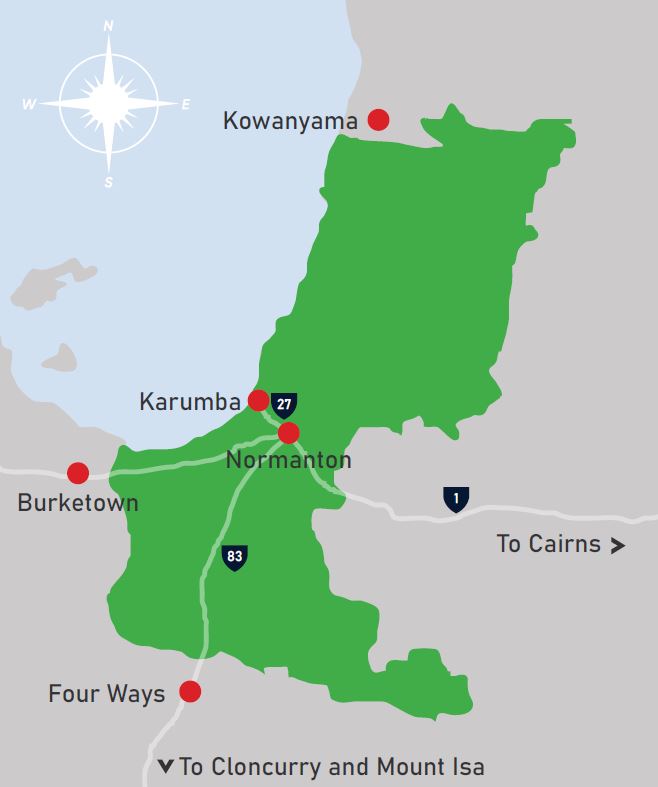Land and Pest Management
Pest Animals Baiting Information
Council runs coordinated 1080 baiting programs between June– October each year for wild dogs and feral pigs.
Landholders are notified of the upcoming programs and make arrangements with the authorised Rural Lands Officer for their 1080 baiting requirements.
Carpentaria Shire Council stores 1080 solution. Only authorised persons can supply 1080 solution to landholders.
1080 information and fact sheets are available on the Department of Agriculture and Fisheries' website.
Department of Agriculture and Fisheries
For further information, please contact the Carpentaria Shire Council’s Rural Lands Officer on (07) 4745 2200.
** Please keep domestic dogs on a leash and under control while on private property or travelling throughout the shire. Please contact the Council if you have concerns, or need information on when baiting has occurred. **

1080 solution is used throughout individual properties in the Carpentaria Shire.
-
Sodium fluoroacetate (1080) is a useful pesticide for the control of invasive animals and has been used throughout Australia since the early 1960s. 1080 is the most efficient, humane and species-specific pesticide currently available for invasive animal control in Australia. In Queensland, 1080 is registered for use in the control of wild dogs, feral pigs, foxes and rabbits. It occurs naturally in a number of native plant species including Acacia georginae (Georgina gidgee) and members of the Gastrolobium (Heart Leaf Poison Bush) and Oxylobium genera (Box Poison Bush).
-
Procedural Compliance in Baiting Activities
- Engagement with Property Owners: The Rural Lands Officers meets with the respective property owners, as per protocol, to outline the baiting process and discuss safety considerations.
- Preparation and Injection of 1080 Chemical: Team members prepare and inject 1080 chemicals into bait meat following strict operational guidelines.
- Documentation and Compliance: All required checklists are completed to ensure adherence to procedural standards.
- Provision of Safety Signage: Signage is supplied to property owners, instructing them on the importance of placement and visibility for safety.
- Placement of Baits: Property owners hold responsibility for the placement of baits on their properties following the Council’s guidelines as per legislation standards.
- Engagement with Property Owners: The Rural Lands Officers meets with the respective property owners, as per protocol, to outline the baiting process and discuss safety considerations.
-
Page 58 of the North West Queensland Regional Biosecurity Plan 2022 – 2027 states that Council is responsible for conducting coordinated programs to support the priority management of invasive species, including the implementation of the 1080 Baiting Program.
Fact Sheet and Information
| # | Name | Size | Type | Download |
|---|